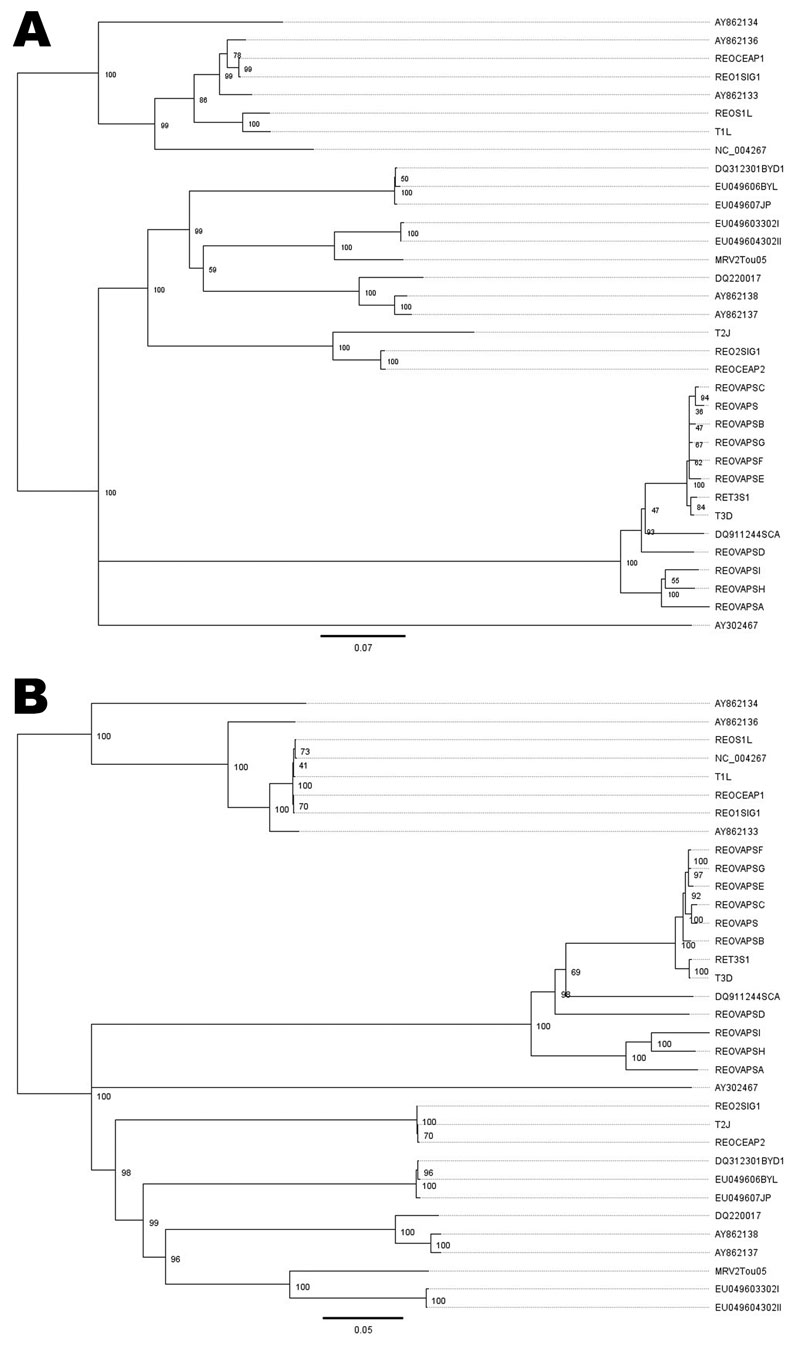Volume 17, Number 8—August 2011
Research
Novel Human Reovirus Isolated from Children with Acute Necrotizing Encephalopathy
Figure 3

Figure 3. Phylogenetic trees of the small segment 1 of reoviruses. A) Nucleotide sequences; B) amino acid sequences. Scale bars indicate nucleotide (A) and amino acid (B) substitutions per site.
Page created: August 24, 2011
Page updated: August 24, 2011
Page reviewed: August 24, 2011
The conclusions, findings, and opinions expressed by authors contributing to this journal do not necessarily reflect the official position of the U.S. Department of Health and Human Services, the Public Health Service, the Centers for Disease Control and Prevention, or the authors' affiliated institutions. Use of trade names is for identification only and does not imply endorsement by any of the groups named above.